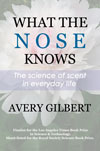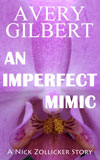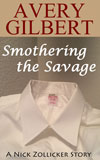
In 1997, social psychologist Robert Baron published a modest field study about the behavioral effects of ambient odor. The experiment was simplicity itself. Baron stationed a person in a large shopping mall near Albany, New York, and had him ask the occasional passerby to make change for a dollar. A nearby confederate recorded whether or not the passerby helped out. The olfactory angle was manipulated by having the accomplice stand in front of a pleasantly scented shop—Cinnabon, or The Coffee Beanery, for example—or in front of a nonscented shop, such as Banana Republic or Nine West.
Previous laboratory experiments suggested that pleasant odors improve mood and make a person more likely to volunteer for a boring task. Baron upped the ante by asking whether such an effect could be observed in real life. It turns out it could. People were much more likely to help, when prompted, in the presence of a pleasant background scent. Thus was born the Cinnabon Effect.
I’ve always been a fan of field studies. In my view, psychological effects squeezed out of undergraduates in the artificial conditions of a campus lab building generalize to other students in similar scenarios on other campuses—and no farther. Any behavioral finding worth its salt should be observable in the real world.
That’s why I
reported favorably about a French field study on perfume wearing. It was conducted by another social psychologist, Nicolas Guéguen. He had young women walk a few yards ahead of a random person and “accidently on purpose” drop a glove or a packet of tissues. A confederate recorded whether the person intervened—by calling out to the young woman or by retrieving the object. The scent angle here was whether or not the woman wore perfume. Sure enough, people were more likely to offer unprompted assistance when Guéguen’s actress was wearing perfume.
Score another win for pleasant scent making people more helpful. Yet Professor Guéguen was not entirely satisfied. Men were more responsive to the scented lady than were women. Therefore a sexual interest could have been at play, above and beyond the simple pleasantness of the scent.
Guéguen has now
repeated his study in an indoor shopping mall, using both male and female confederates. This time the glove was “accidently” dropped in front of either a scented establishment (bakery or pastry shop) or an unscented one (e.g., a clothing store). The effect was clear as a bell: help was offered about half the time in front of the clothing store, and about three-quarters of the time in front of the bakery. Men were more likely to help than women, but the confederate’s sex has no bearing on the outcome.
Guéguen has confirmed the Cinnabon Effect and extended it to spontaneous acts of kindness. But what about the underlying psychology? Baron thought yummy smells improved mood which led to helpfulness. Guéguen didn’t assess mood in his new study. I wonder whether another factor might be involved. Perhaps food aroma signals resource abundance—it implies that there is plenty to eat for everyone. That fact alone would incline people to be more generous.
This suggests another experiment, a twist on Guéguen’s original.This time the young lady doesn’t wear
Coco by Chanel—instead, she carries a fragrant slice of pepperoni pizza.
UPDATE May 12, 2019
Questions have been raised about a number of studies published by Nicolas Guéguen, including this one in particular. See my new post on the matter
here.
The study discussed here is “The sweet smell of . . . implicit helping: effects of pleasant ambient fragrance on spontaneous help in shopping malls,” by Nicolas Guéguen, published in The Journal of Social Psychology 152:397-400, 2012.















